Adventure Cycling: 11 Favourites

The inspiration for this blog came from a blog post of the founder of Apidura, Tori Fahey, who, similar to Yellow Jersey, has been a long-standing supporter of my adventures. In her blog ‘Quality Sells, Mediocrity Sales’ Tori explains why Apidura doesn’t jump on the Black Friday discount wagon: ‘The world does not need more things sitting on shelves and in closets collecting dust. It’s not good for the Earth and it’s not good for our wellbeing.’
Her blog encouraged me to look into my shelves and selected eleven products that either haven’t gathered dust or, as in the case of tires, have lasted for a long time. If things get used, they can break. I have listed a few of my favourites that have lasted without any damage, no matter how heavily used. But I also listed one which has failed, but has been replaced without any problems.
Pic: Outside is free – Loch Ordie, Scotland
When writing this blog and selecting pictures I initially thought to include images of the products. But I am sure a quick search online will get you there, so instead of using images of ‘things’, I have included images of the adventures those ten items have enabled me to do. As Tori said, ‘things sitting on shelves collecting dust are not good for the earth.’ But if we use them wisely, they are good for our wellbeing.
Schwalbe Marathon Mondial Tires
Have you ever ridden 10,000 km on a set of tires without a single puncture? I used the Schwalbe Marathon Mondial on my round the world trip and rode 32,000km on two sets (I used another tire for the first 2,000 km). It’s not the lightest tire on the market, but it’s rock-solid, rolls well and lasts a long time. And unless I venture into very loose or very technical off-road terrain, it’s the most versatile tire I have ridden so far. It can be run tubeless if the rims allow. Otherwise, I would recommend using Schwalbe tubes, which feature a removable valve. This allows inserting Doc Blu (or another tubeless milk) into the tube, which will prevent small punctures.
A great steel frame
There probably isn’t any need to weld a bike frame for most of us. But next to the riding comfort, this has been one criteria why long-distance tourers in the past chose steel frames over aluminium or carbon. Titanium frames are rock solid too, but their price tag is significantly higher. I have ridden a Surly Ogre, made of 4130 CroMoly steel, once around the world (34,000 km) and still use the bike frequently. With a current price tag of £775 for a frameset and around £1700 for a full bike it isn’t cheap, but the most versatile bike I ever owned. I use it as a commuter, gravel, bikepacking and touring bike at the same time. The number of mountings on the frame is an advantage too. But my favourite are the horizontal dropouts, which allow me to run any gearing solution I like.
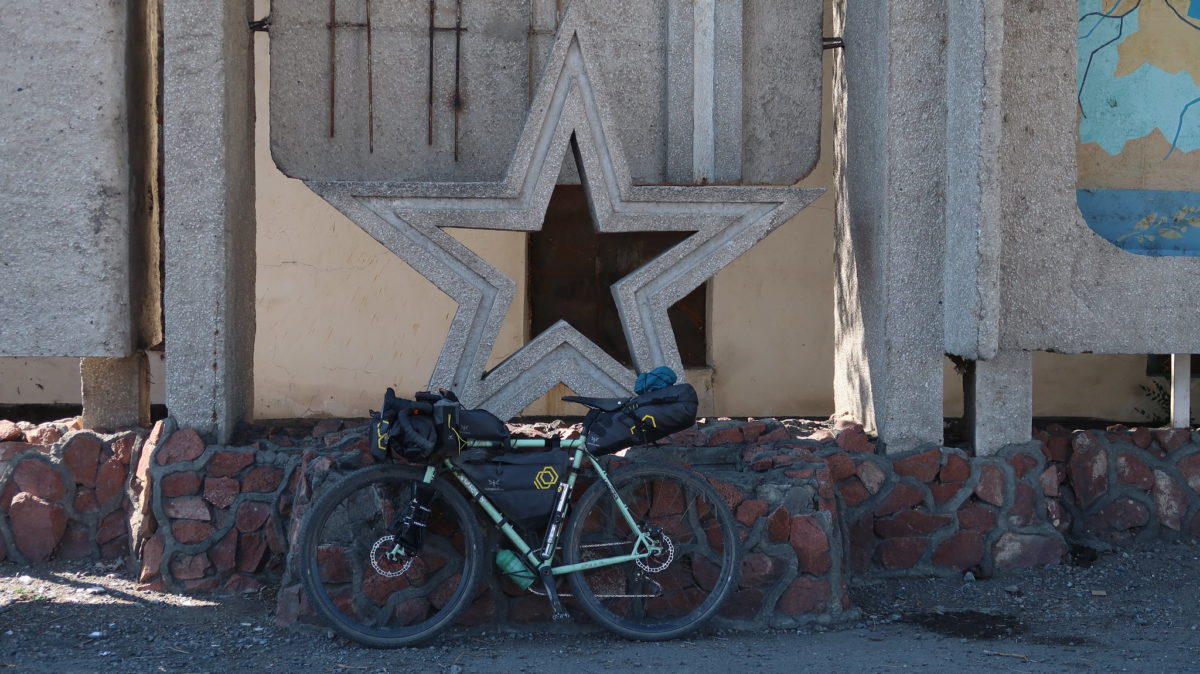
Yeti Passion Three sleeping Bag
When you look at the price tag of the Yeti Passion Three, you might think that £450 for a sleeping bag is a lot of money. I wouldn’t debate that, but at the same time I have used it since I started my round the world trip in September 2015. I have stopped counting the nights it gave me a comfortable sleep. When breaking the price down over five years, I have possibly spent the price of a take-away coffee each time, and that sounds more than reasonable. It’s not an extreme sleeping bag suitable for Arctic temperatures, but the best choice on most of my bikepacking trips. It packs super small and both down filling and zips are still intact after five years of frequent usage.
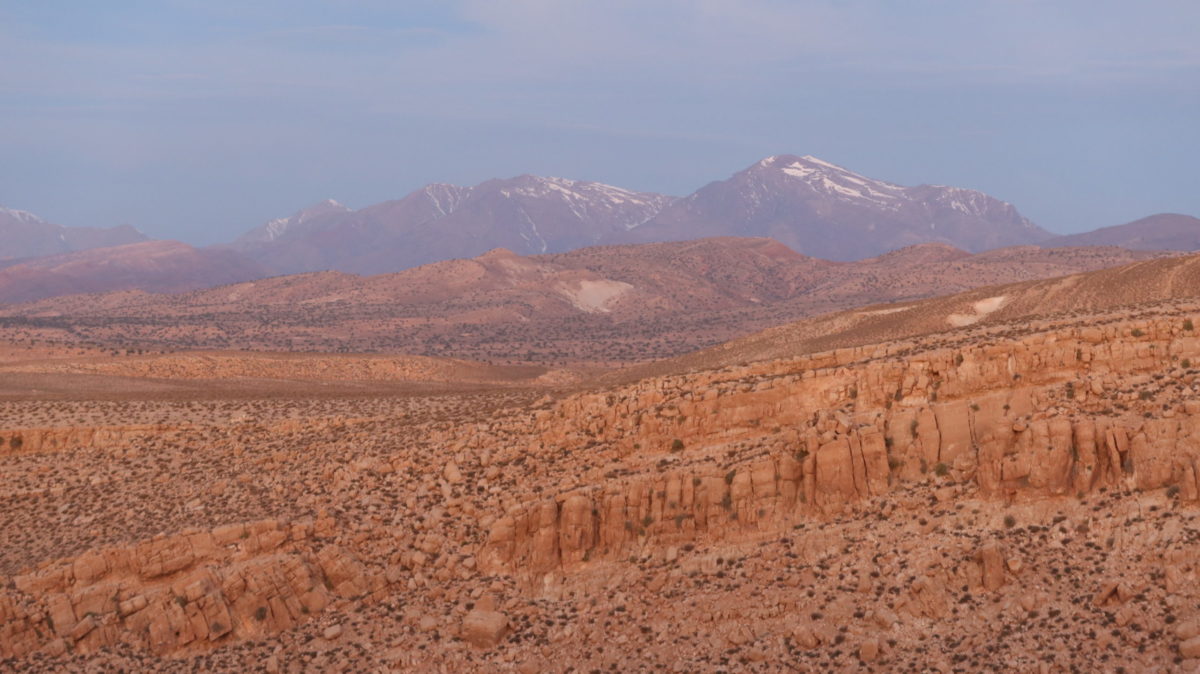
Pic: Now Dream: No need to worry where to sleep, a good sleeping bag and mattress make for views like this in Morocco
Apidura Backcountry saddle bag
This is the product that inspired me to write this blog. Apidura’s products are not cheap, but they last. I have used their bags since I started bikepacking in 2014, and I only had a few zips giving up on me on frame bags. When a zip breaks, it doesn’t mean that the frame bag can’t be used any more. I send it back, get it repaired, and continue using it. My saddle bag is featured in Tori’s article as the ultimate proof for the longevity of their products. 34,000 km around the world, various bikepacking trips in Scotland, various trips cycling home for Christmas and a tough adventure through the heart of Tierra del Fuego: there are thousands of memories attached to this bag.
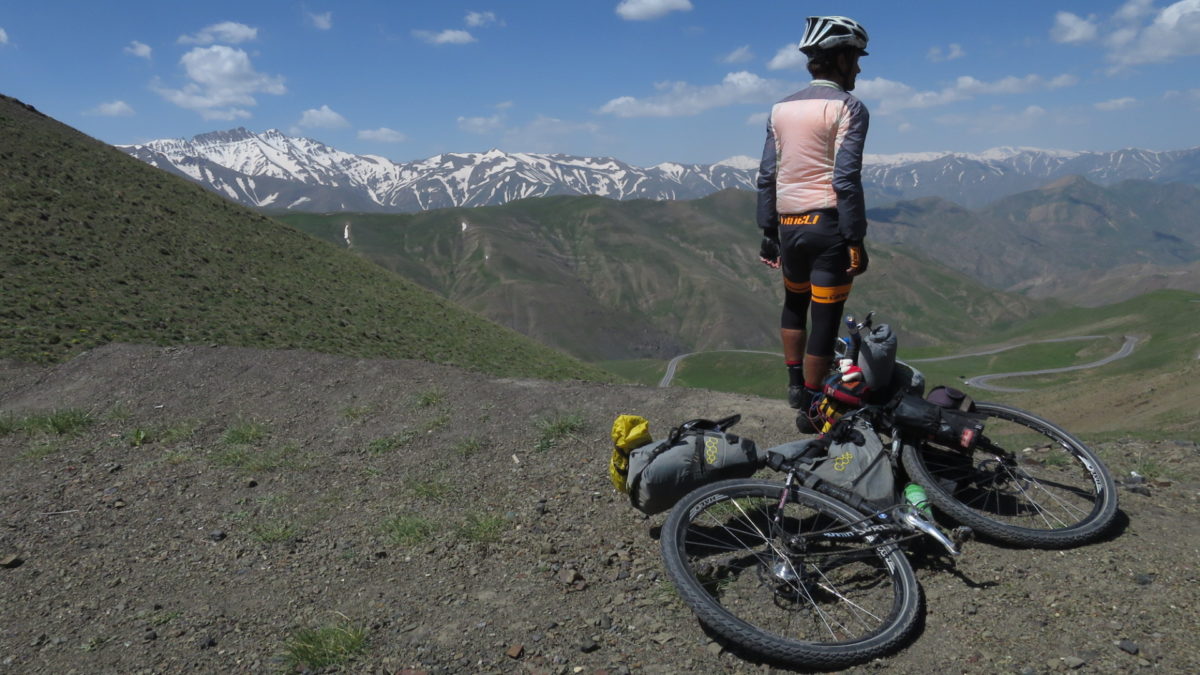
Pic: On the highest point of the round the world trip in Iran
Lezyne pumps
Over the years I have used the Lezyne Alloy Drive, Micro Floor Drive and most recently the Pocket Drive. What all three have in common: they last a long time. I used the Alloy Drive pump for a number of years, but sadly lost it somewhere in the Scottish Borders. I hope someone found it and gave this pump a second life, as it showed no signs of slowing down. The Micro Floor Drive was my goto choice for cycling around the world and is still in use. I needed a powerful pump to inflate my tires after each flight transfer. The Micro Floor combines the advantages of a floor pump with the size of a smaller pump. On minimal bikepacking trips, and as a replacement for the Alloy Drive, I chose the Pocket Drive, which is small enough to hide in any jersey pocket.
Rad Trail Long Day Hat
It took me a long time to find a cycling hat that lasts and doesn’t require handwashing. Most cotton hats have a shield made of either cardboard or plastic, which destroys them in the washing machine. I was really happy when I met Ben Salthouse on the Highland Trail 550, who is behind the Rad Trail Long Day Hut and gave me a prototype to try. This was in May 2019, and I used the hat riding almost four weeks in the Tian Shan in Kyrgyzstan, on various long trips mapping the Highland Perthshire Gravel Trails and in the Atlas Mountain Race. It was filthy each time I put it in the washing machine, and looked like new afterwards. At $35 (£26) it isn’t cheap but lasts a very long time.
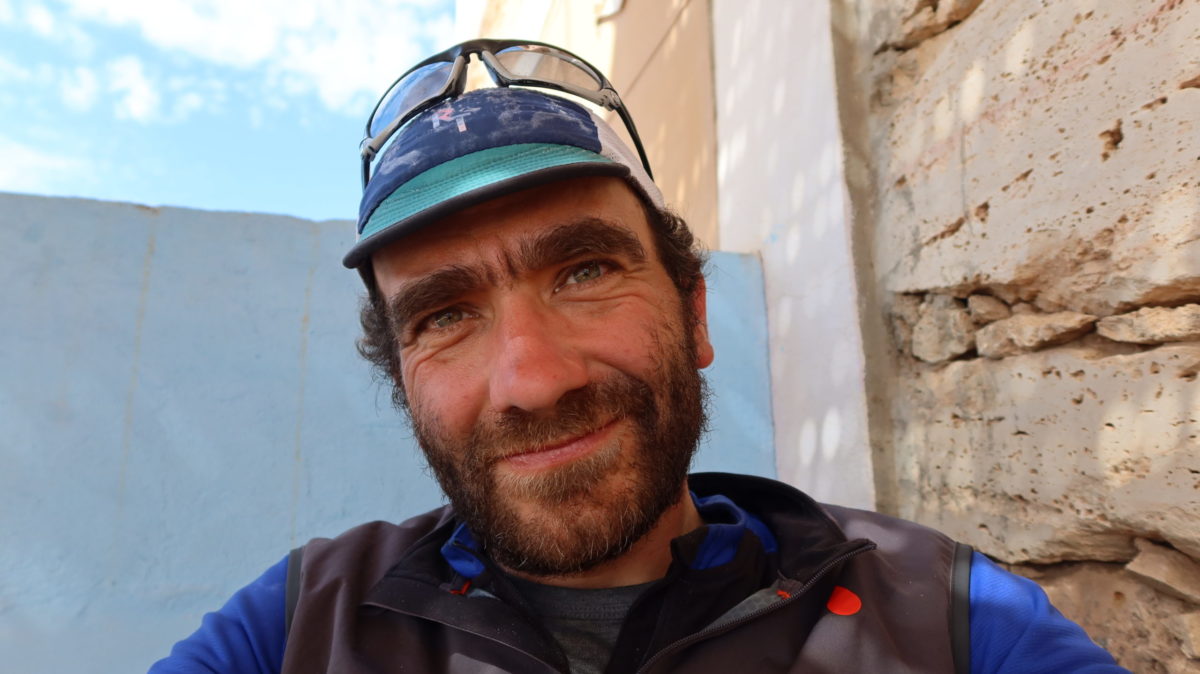
Pic: A friendly smile in Morocco with the Rad Trail Long Day Hat – with salt artwork included
Montane Bionic Base Layer
Sadly Montane decided to discontinue the base layer that accompanied me all around the world. It had various rucksacks on its shoulders, hip bags around its waist and survived multiple crashes. At £50 it wasn’t a cheap base layer when I bought it, but after ten years I still wear it, without a single hole in it. It doesn’t smell after long days in the saddle and keeps me comfortable and dry in the roughest of conditions. I haven’t tested its replacement, as I don’t see any need to upgrade. But if it lasts anywhere near as long, it’s worth choosing.
Defeet Woolie Boolie socks
Good socks have multiple functions. They provide the ultimate finish to a nice cycling outfit, keep me warm if needed and hopefully don’t cause anyone in the room or tent to suddenly collapse when I take off my shoes. And they need to last, as regardless of winter or summer, cycling without socks is not really an option unless you are in sandals. The only pair of socks that has survived multiple cycling journeys since 2010 are my Woolie Boolies from Defeet. Made out of thick merino with a small sheep underneath, they have outlasted several pairs of cycling shoes since.
Garmin eTrex 20x
It runs on 2 AA batteries for almost three days and can use worldwide cycling maps that are updated each year and free to download. If I would have to write a sales pitch for the eTrex 20x, that would be it. The eTrex also has a joystick instead of a touchscreen, which becomes important once the temperatures drop outside. I used its predecessor on my round the world trip. But similar to my pump, I sadly lost my eTrex and had to replace it. While it takes a while to transfer a map image to the device, you can use an external memory card to speed up the process. One of the most important accessories on my bike, it has guided me to amazing places in the world.
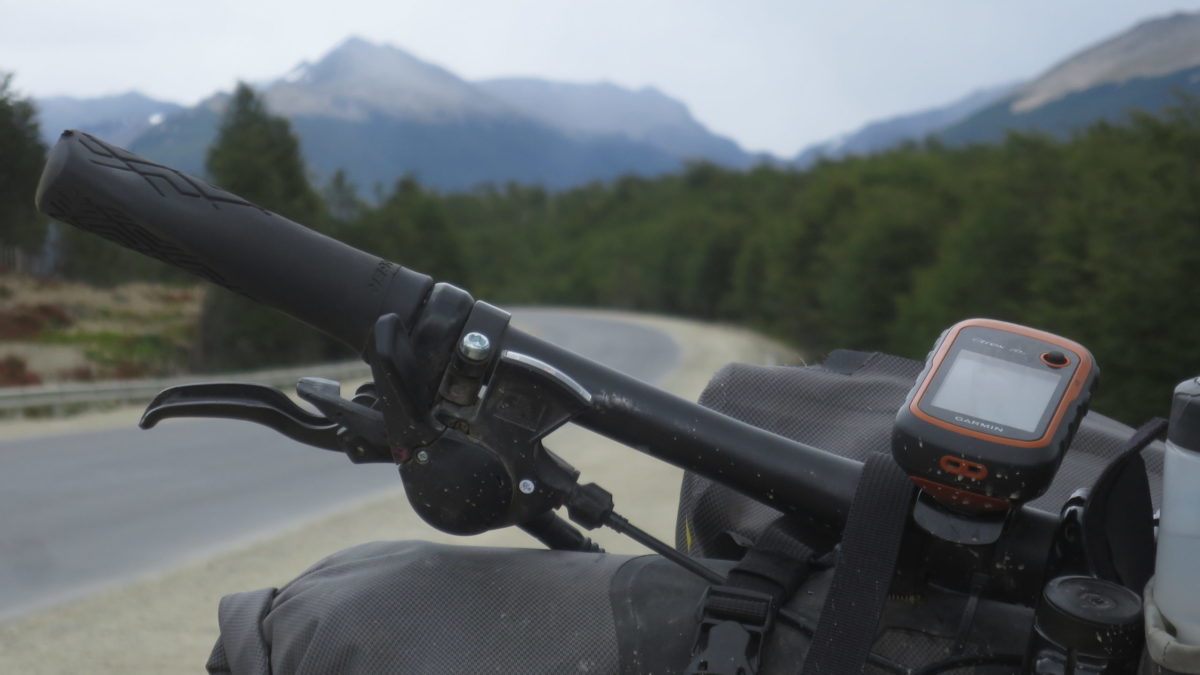
Pic: On the road in Tierra del Fuego
Exped Synmat HL M
When the laminate on my first Synmat failed on my round the world trip, I was happy that I only had a few days to go to Wellington. Understandably I had no proof of purchase with me on a year-long round the world trip, but the local outdoor store was there to help. I handed in my broken mattress and got a new one to continue the trip. The first models like mine weren’t sold with the Schnozzel Pumpbag, which allows inflating the mat rapidly while preventing humidity from human breath affecting the laminate. I was happy with my replacement, but a few years later I had a similar problem again, despite using the Schnozzel Pump bag. Thankfully some products evolve with time, and this was the clear case here. When I got my second replacement, the construction of the mattress had changed, and since then my current Synmat has done a great job keeping me comfortable and warm.
Pic: Lights in action on the Iron Curtain Trail, Germany https://www.dropbox.com/s/m0q3bb3xynx4aph/IMG_4278.JPG?dl=0
Exposure Maxx D lights
At almost £400 the Maxx D comes with a heavy price tag for a front light. On the flip side, it enabled me to ride around the world in less than a year, as I could still cycle long hours even in winter. It lasts more than 30 hrs on one charge if needed, and the battery shows no signs of giving up, even after 5 years. So unless I ride endless hours in the night in races, one charge is more than sufficient for a long weekend bikepacking in winter or many commutes home.






